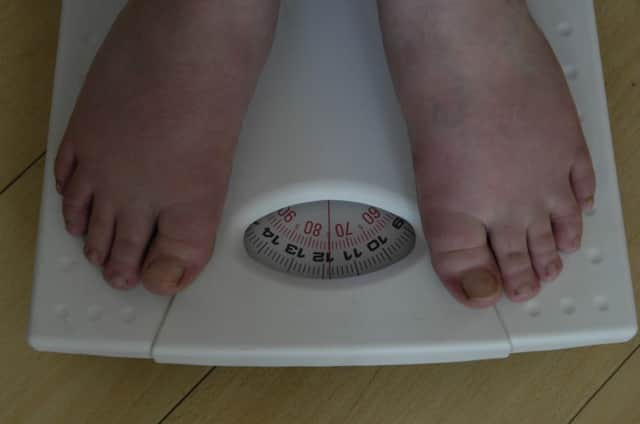Obesity costing Scotland £145 every second


The extra economic costs are mainly down to obesity-related absenteeism and workers’ compensation claims.
Internationally, Scotland has above-average levels of adult overweight and obesity, the report by the Scottish Parliament Information Centre (SPICE) finds.
Advertisement
Hide AdAdvertisement
Hide AdAlthough levels have stabilised among men in recent years, obesity among women is still rising.
“The high prevalence of obesity is a major issue facing most developed countries, and Scotland is no exception,” report author Andrew Castle states.
“Being obese increases a person’s risk of developing conditions requiring expensive, long-term management, such as type II diabetes and cardiovascular diseases.
“Additionally, there are significant, indirect economic costs arising from increased sickness absence and premature mortality. It is for these reasons that many governments have now made tackling the issue a priority.”
One in three children is at risk and one in three adults in Scotland is thought to be obese.
CONNECT WITH THE SCOTSMAN
• Subscribe to our daily newsletter (requires registration) and get the latest news, sport and business headlines delivered to your inbox every morning
The Scottish Government has previously put the cost of obesity to the NHS at £312 million, but the SPICE report points to different statistics which put the cost at £5.1 billion in England – which converts to about £600 million in Scotland.
The total impact of obesity was estimated to be 3 per cent of GDP by the McKinsey global institute last year and translating this to Scotland results in a figure of £4.6 billion, the report says.
Advertisement
Hide AdAdvertisement
Hide AdThis takes into account “loss of productivity” among obese people due to their shortened lifespans and impaired quality of life, as well as healthcare costs and the cost to the public purse of mitigating the condition.
Poorer Scots tend to have higher levels of obesity, particularly among women and children. Obesity also increases a person’s risk of developing conditions such as type II diabetes, high blood pressure and cardiovascular diseases.
Scottish Conservative health spokesman Jackson Carlaw said: “It’s becoming increasingly apparent that obesity is rivalling almost everything else when it comes to a public health challenge.
“We need to treat it as seriously as we have done alcohol and cigarette addiction.
“However, while the NHS and Scottish Government can always do more, in general it comes down to an issue of personal responsibility, and we mustn’t forget that.”
The SNP government has come under fire in recent years for failing to meet its 2007 manifesto pledge for all primary school children to benefit from at least two hours of PE each week, and secondary school children in S1-S4 from 100 minutes each week.
The Liberal Democrats said yesterday that only 33 per cent of S4 pupils in East Lothian are receiving 100 minutes of PE a week and in primary schools and only 86 percent of pupils in West Lothian are receiving the SNP’s pledged amount.
Lib Dem health spokesman Jim Hume added: “Obesity comes at great cost to the individual, their families and society. Scottish ministers must do more if we are to have a fighting chance of tackling this crisis.
Advertisement
Hide AdAdvertisement
Hide Ad“The Scottish Government must move fast to tackle Scotland’s £4.6bn obesity crisis. It is upsetting that so many children are considered overweight or obese before they even set foot in a Primary School.”
A spokesman for the Scottish Government said it is committed to creating a healthier Scotland.
“Obesity is complex issue linked to many lifestyle factors and requires action on many fronts. Small changes make a big difference,” he said.
“Although there has been a slight increase in recorded waist sizes, rates of obesity have been stable since 2008.
“We have also seen that 64 per cent of adults and 75 per cent of children met the recommended levels of physical activity, demonstrating an upward trend in the number of people leading healthy and active lives.”
SCOTSMAN TABLET AND IPHONE APPS